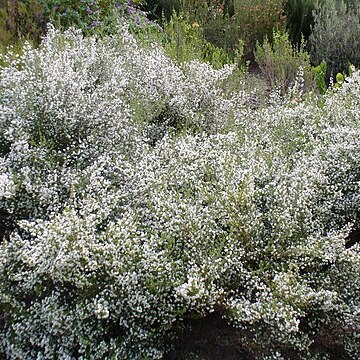Erect shrub, up to 0.6 m high. Leaves 2-3 mm long, elliptic or oblong, obtuse, thick, sulcate, glabrous, glossy, younger minutely ciliate. Flowers 3-nate. Calyx sepals ± 2 mm long, spreading or reflexed, ovate or broadly lanceolate, acute, leathery, subviscid, glabrous. Corolla 4-5 mm long, globose-urceolate, suddenly contracted at throat (fluted) with 8 longitudinal channels, viscid, glabrous, white; lobes ± 1/8 length of tube, spreading or recurved. Filaments bent round ovary, contracted round stigma; anthers included, 0.7 mm long, lateral, oblong, smooth, ciliate at base; pore nearly as long as theca; appendages broadly linear, densely ciliate, partly decurrent along connective. Ovary densely hirsute; style included, thickened towards truncate apex; stigma subsimple. Flowering time July-Nov.
Erect shrublet to 60 cm. Flowers small, globosely urn-shaped, often fluted, white.

